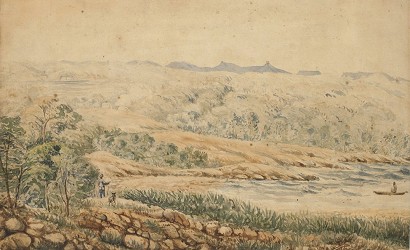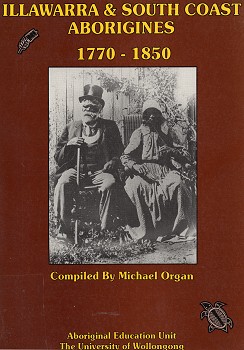
surfresearch.com.au
organ : canoes se australia, 1797-1892
organ : canoes se australia, 1797-1892
|
|
|
|
|
|
 |
surfresearch.com.au
organ : canoes se australia, 1797-1892 |
| (Ad)1826 Canoe of Jervis Bay, New Holland by (Francois-Edmond) Paris. Pirogue de la Baie Jervis, Nouvelle Holland par Paris, 1826. Plate 112 |
 |
| (Ad) Robert
Hoddle at Murremurrang,
1829. In the late 1820s, surveyor Robert Hoddle painted a coastal scene, including an Aboriginal returning to the beach in a bark canoe, Wallinga Bay, NSW. Robert Hoddle: Murremurrang and Walliga Bay, South of Jervis Bay, 1829. State Library of Victoria http://handle.slv.vic.gov.au/10381/109429 Catalogue notes: Watercolour; 25.5 x 39 cm. on cream board mount 44 x 51 cm. Inscribed in ink on l.c.of original mount: Murremurrang and Wallinga Bay, South of Jervis Bay New South Wales. Drawn by Robert Hoddle. 1829. Inscription on original mount cropped and adhered on l.c. of present mount. |
 |
| (1) Australian Gin Twofold Bay | June 29th 1843 | Pencil |
MLPXD81L5 |
| (2)Char-ree-uerro Twofold Bay | Sept 5th1843 | Watercolour | |
| (3) Twofold Bay Canoe |
Pencil | MLPXD81f.8 | |
| (4) Budrooro, Chief of Twofold Bay Tribe,
N.S.W. Reproduced: Dutton (1974), plate 54, b/w. |
Watercolour |
MLPXD81f.9 |
|
| (5) Twofold Bay - Native Canoe |
Watercolour | MLPXD81f.10 | |
| (6) Mur-rowra Esqr. Bundyang |
Pencil | MLPXD81f.11 | |
| (7) Aborigines seated in a canoe | Pencil | MLPXD81f.12 | |
| (8) Aboriginal woman in canoe offering fruit. |
Pencil | MLPXD81f.13 |
| (Ad) 1844
Number 8: Twofold Bay Canoe. An almost identical design to that of Jervis Bay, above. Brierly's notes read, in part: b_ of sitting - kneeling and sitting on their heels Oars mer(e)ly a small bit of bark about the size of a china plate at the bow are a m_ of wooden skewers r_ in which the spears rest two half hoops keep it in shape - 9ft long, 6 in deep, 14 inches beam made from the inner rind of gum tree, gathered togr. (together) at each P_ |
 |
| (Ad) 1844 Number 10a: Native [Aboriginal] and canoe, Twofold Bay, NSW. Brierly O.W.: Sketches made in Australia, and during the voyage of the H.M.S. Maeander, in New Zealand, Tonga, and South America], 1842-1844, 1850. |
 |
Organ,
Michael
:
A Documentary History of the South Coast Aborigines, 1770 - 1850 Including a Chronological Bibliography 1770-1990 Aboriginal Education Unit Wollongong University, 1990. Trove http://trove.nla.gov.au/work/20873445 |
 |
|
|
|
|
|
|